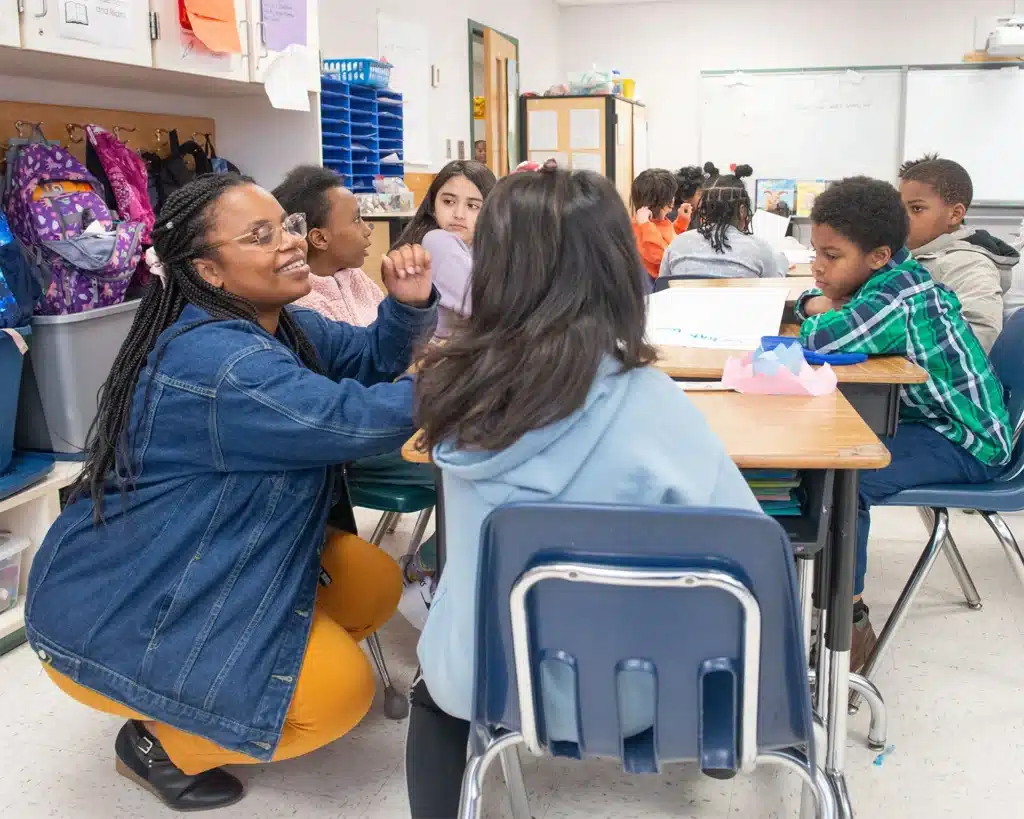
A Multi-Tiered System of Supports (MTSS) is a systemic, prevention-focused framework that integrates academic and behavioral supports to meet the needs of all students. With its tiered structure, MTSS emphasizes proactive, data-driven practices that begin with universal supports for all learners and scale up to targeted and individualized interventions as needed.
By offering effective, practical strategies that align with the goals of MTSS, the Responsive Classroom approach enhances the effectiveness of MTSS by translating its tiered framework into daily classroom practice. It equips teachers with the skills and strategies to proactively support all students and respond effectively when more targeted interventions are needed. When used together, the Responsive Classroom approach and MTSS create a powerful synergy that offers both the structure and substance to help every student thrive.
At their core, both the Responsive Classroom approach and MTSS emphasize proactive strategies to foster positive behavior and student success. They recognize that the most effective learning environments are those where expectations are clear, relationships are strong, and students feel a sense of belonging. Both approaches support adult learning as well, helping educators cultivate the skills and tools needed to guide student growth and respond to challenges before they escalate.
In MTSS, all students receive universal support through tier 1 strategies, with increasing levels of intervention (tier 2 and tier 3) provided for those who need additional help. Similarly, Responsive Classroom practices are designed to meet the needs of all learners and can be adapted to provide greater levels of support depending on individual needs.
MTSS provides schools with a strong structure, but many educators need practical strategies to bring that structure to life in the classroom. The Responsive Classroom approach fills this need by offering concrete, evidence-based tools that teachers can use throughout the day:
To further explore how Responsive Classroom practices align with each tier of MTSS, view the full chart here: Three Tiers of Support Using the Responsive Classroom Approach.
The Responsive Classroom approach goes beyond offering a set of strategies. It provides a unified philosophy for supporting the academic, social, and emotional needs of every student. This approach helps teachers address what students need and gives them the tools to meet those needs with confidence and consistency.
When integrated with MTSS, the Responsive Classroom approach enhances the effectiveness of tiered supports by translating the framework into daily routines and interactions. Together, these approaches create a cohesive system that promotes growth, connection, and success for all students.
A. Vito Martinez Middle School in Illinois offers a clear example of how the Responsive Classroom approach can enhance MTSS in action. Responsive Advisory Meeting has become a key part of the school’s MTSS implementation. This consistent structure helps all students feel seen and supported, while also providing a space for tier 2 and tier 3 interventions. Educators use Advisory to teach expectations, lead restorative circles, and build community. Principal Sarah DeDonato see Responsive Classroom as a natural extension of MTSS and describes the way her school has merged the two approaches as “best instructional practices that we just do because we know it’s good for kids.”
Read the full case study here: Reducing Absenteeism by Increasing Engagement.